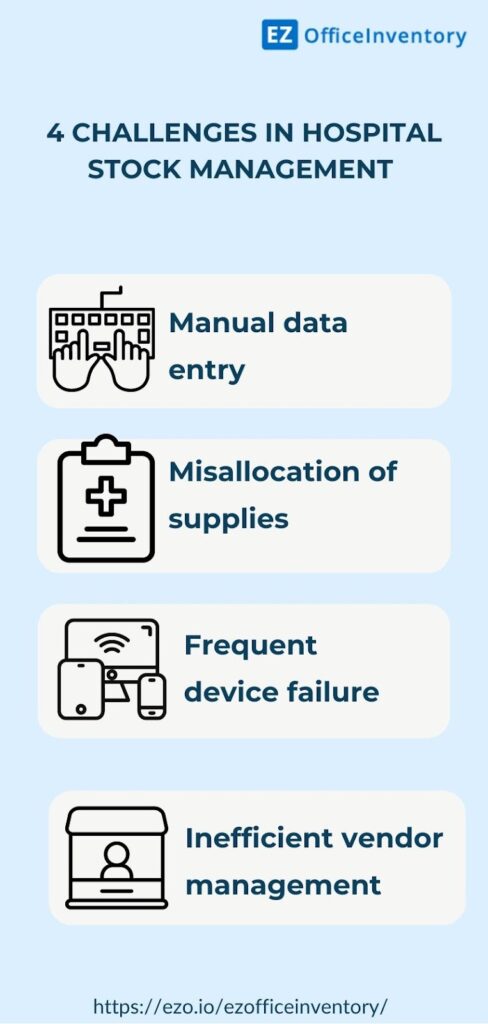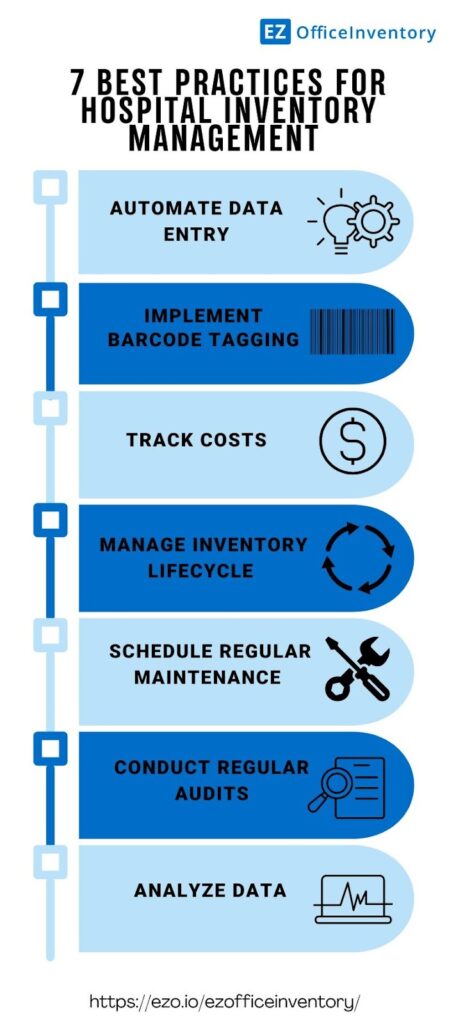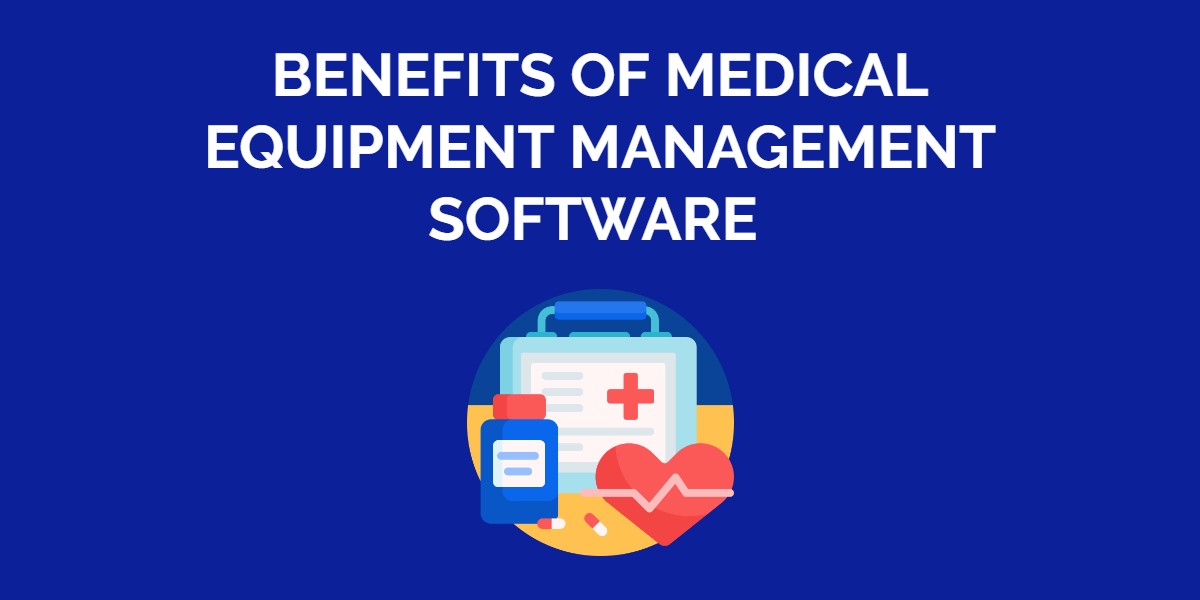Healthcare institutions are entrusted with the crucial responsibility of saving human lives. In order to achieve this responsibility they need to have a strong inventory control to maintain optimal stock levels and manage inventory in a cost-effective manner. Quality inventory management means efficient healthcare delivery, and medical assistance for patients.
Streamlined inventory management enables hospitals to track supplies while addressing overstocking and understocking primarily to better deal with emergencies.
This blog discusses some challenges your healthcare facility can face while managing inventory for emergency units, and the best practices for addressing them using a hospital inventory management system.
What is hospital inventory?
Hospital inventory refers to the repository of different medical resources, including both consumable inventory and asset inventory. It comprises medical supplies, like vitals monitor, blood pressure machines and stethoscopes, and also backup assets, like extra ventilators,ultrasound devices and hospital beds.
All of these resources are essential to run daily hospital operations, especially in the emergency units, and need to be well-managed to provide top-notch patient care.
Challenges in hospital stock management
Hospitals are required to meet strict quality standards set by the government. If they fail to do so, they might be forced to shut down operations by putting human lives at serious risk. Similarly, a malfunctioning tool or expired drug can cause a patient irreparable damage. While these issues may not seem critical upfront, the impact can trickle down and have grave consequences. According to paramedics, hospitals face significant challenges in daily inventory management, including:
Manual data entry
Healthcare professionals rely on daily records to manage hospital operations. These records can be patient data, surgery notes, or details on emergency operations. These notes usually contain critical information on item usage and medical supplies utilized to conduct the procedures.
Manually recording this information can be tedious as it does not automatically update the stock levels, leading to miscalculations and difficulties in analyzing their usage. These records are also prone to serious human error and can lead to delays in information updates. These factors hamper the accuracy of data stored while jeopardizing the overall inventory management.
Misallocation of medical supplies
Lack of robust administrative practices can make it challenging to manage and differentiate multiple kinds of medical inventory. Without a tracking system, equipment can be delivered to the wrong place and cause operations to go haywire if not monitored properly.
Whereas, analyzing the usage of medical supplies can help users allocate them properly and assess their consumption. Healthcare centers can then optimize the use of medical supplies and determine how they will be used.
Frequent device failure
It is quite common for hospitals to experience prolonged downtime for medical instruments and devices. When it comes to dealing with patients, mechanical failure is simply not an option.
Without accurate inventory records, it can be challenging to know if there is enough backup resources to rely on. For instance, without a dedicated inventory system maintaining the records, it won’t be easy to see if you have enough oxygen tanks available in case the existing ones are used up.
Inefficient vendor management
Hospitals often face issues associated with changing vendors, leading to reduced transparency. Unreliable or frequently changing vendors mean an increased risk of low-quality medical supplies. Having the information of your trusted vendors in one place enables you to avoid delivery lags and quality cutbacks on stock.

7 best practices for hospital inventory management
Hospitals facing the above-mentioned issues may find themselves in a complicated situation if they fail to address them. These problems can easily translate into slower response to emergencies, as it can be highly challenging to track the exact location of items needed to treat a patient—for instance, backup oxygen tanks for a patient on a ventilator. A cloud-based asset tracking system is one of the best solutions to these inventory-related problems.
To get you started, let’s review some of the best practices in hospital inventory management that you can quickly adopt!
Automate data entry
As discussed above, manual data entry can seriously impact the sustainability of your hospital and slow down daily operations. Automated data entry eases the process of recording and storing essential inventory details by creating an asset register.
Such a repository captures essential data, like serial numbers, barcodes, item counts, etc. Each item can have individual serial numbers to enable barcode scanning. Once you have recorded all the relevant information, you can categorize inventory items into groups. For instance, adding oxygen pumps needed in emergency to the group ‘Emergency Oxygen Supplies’.
This way, your hospital staff would always know what group each inventory item lies in. They can simply check out their desired item directly from the system along with other essential items, like assets. With enhanced visibility into the stock, your staff can easily track their location without wasting time, especially during emergency situations.
Implement barcode tagging
While data entry is the first step to ensure your inventory details are recorded correctly, tagging is the way to make that information accessible. Asset tags help minimize the risk of loss and enable hospital staff to retrieve inventory information with a scan quickly.
Immediate scanning is required, particularly during an emergency case when the paramedics do not have access to enough medical supplies. They can quickly scan the available item on the spot and assess if it’s available in optimal quantity. Additionally, barcode tagging enables procurement managers to update the inventory levels on time. They can add inventory by scanning the new stock and populating existing records with the new quantity. This practice ensures that emergency units are equipped with an accurate quantity of stock.
Paramedics can also verify essential inventory items, like the correct type of gloves, oxygen masks, needles and syringes, and other supplies, to ensure they are of the right quality and quantity. This can be easily accomplished by scanning the barcode of these items; the system will automatically show their quantity and location – enabling paramedics to take decisions accordingly.
Track costs
Operating within a budget is one of the primary concerns of hospitals. To remain within the defined budget, hospital staff must track the cost of procuring new supplies with every purchase. Robust cost tracking helps you maintain accountability and provides a structured breakdown of your expenditures.
Public hospitals run on funds that must be justified at the end of the fiscal year. Tracking the costs makes justifying these funds easier. Inventory management system allows staff to track the cost of each purchase in the system and enables the higher authorities to use the information for reporting purposes. Purchase orders can be recorded with details of all inventory purchases which can be reconciled on monthly basis to check for accuracy in costs.
Automated procurement enables you to control the stock quantity and eliminate unnecessary expenditures to avoid excessive costs. Identifying these costs, in turn, helps forecast future spending, so there is no compromise on meeting the inventory needs of your emergency unit. With the budget in control, your unit will always be well-equipped – operating at its maximum capacity.
Manage inventory lifecycle
Tracking the lifecycle of your hospital asset inventory is another way to ensure it’s available in optimal condition when needed. Asset inventory – comprising of backup inventory items, like extra X-RAY machines – need to be inspected regularly to ensure it functions properly. Inspections can include checking them for physical damage and assessing their movement and stability. An inventory management system enables you to schedule these inspections and send reminders to staff so these items can be well-maintained.
Efficient asset lifecycle management helps minimize the operational costs of asset inventory and improves its performance. Proactive asset monitoring enables you to make data-driven decisions and employ strategies that can help achieve asset reliability. Improved asset reliability helps drive speedy operations by minimizing operational risks associated with malfunctioning assets.
In addition to this, some inventory items, like syringes and needles, have a shelf life; tracking their expiration date helps prevent their usage beyond that date. This way, your staff can ensure patient safety and reduce the holding costs of keeping unusable inventory.
Schedule regular maintenance
Regular maintenance sessions for frequently used equipment reduce interruptions in medical procedures. According to a report, around 400 people die every year due to severe accidents involving medical devices. These devices are generally outdated and not in the best working condition.
Hospital staff can conduct regular checks to see if the equipment is in optimal condition and point out any malfunctioning equipment. If equipment malfunctions unexpectedly, the staff can refer to an item’s maintenance logs. These logs help the staff assess how the equipment has been maintained in the past so relevant repairs can be made.
You can schedule maintenance sessions in advance to ensure that the item is not unavailable at the time of a surgical procedure. For instance, send the surgical equipment to be sanitized well before the scheduled surgey. You can create a group of items regularly used together so they can be serviced together. Regular servicing ensures optimal performance and arranges for the needed resources.
Conduct regular audits
Public hospitals run on government funds and private donations for everyday operations. Justifying these funds can be tedious if you do not have the essential inventory information consolidated in a platform. An inventory management system helps hospitals verify item quality, condition, and quantity to ensure compliance standards are met.
Audits help ensure that the actual inventory count matches with the digital records to identify and rectify any instances of theft, or loss. This helps streamline asset management compliance, and enables hospitals to stay in line with the established standards.
Internal audits conducted by hospital staff are a useful way to identify whether your emergency unit is complying with HIPPA regulations. HIPPA regulations require hospitals to maintain their assets well and use only well-protected equipment to conduct medical procedures. They also include protecting the information of both patients and staff for security and confidentiality purposes.
Audits help flag any faulty assets or areas of non-compliance instantly. By complying with these standards and using audits as a regulatory tool, your hospital can prevent the fear of shutting down operations due to non-compliance.
Analyze data
Using the latest hospital data and statistics to manage hospital inventory not only saves time and effort, but reinforces regulatory practices for successful hospital operations. Emergency units require day-to-day reports to assess what inventory has been utilized and needs to be procured for the next-day operations.
To ensure this, you can generate detailed inventory consumption and utilization reports to provide a breakdown of how and in what quantities inventory has been used. You can even create graphs and pie charts to represent this information in an easily digestible format for hospital supervisors and paramedics’ assessment. Staying on top of this data is crucial for hospitals to reduce hindrances for the staff in providing quality patient care.
You can see what inventory items are most used to expedite their procurement. You can check the inventory thresholds and generate reports to see if inventory was procured within the set limits. This information is vital for hospital administrators to make better-informed decisions about inventory policies, investment in new technologies, and long-term planning.

Get your medical equipment in order with hospital inventory management
Being in the healthcare sector takes work, especially when tracking each medical device and recording its performance. This can be done quickly through automated software that allows you to tag your assets for optimized use and accessibility. You don’t have to compromise on the health of your patients ever! With the help of hospital inventory management best practices, you can streamline your operations and ensure timely response to emergencies.









